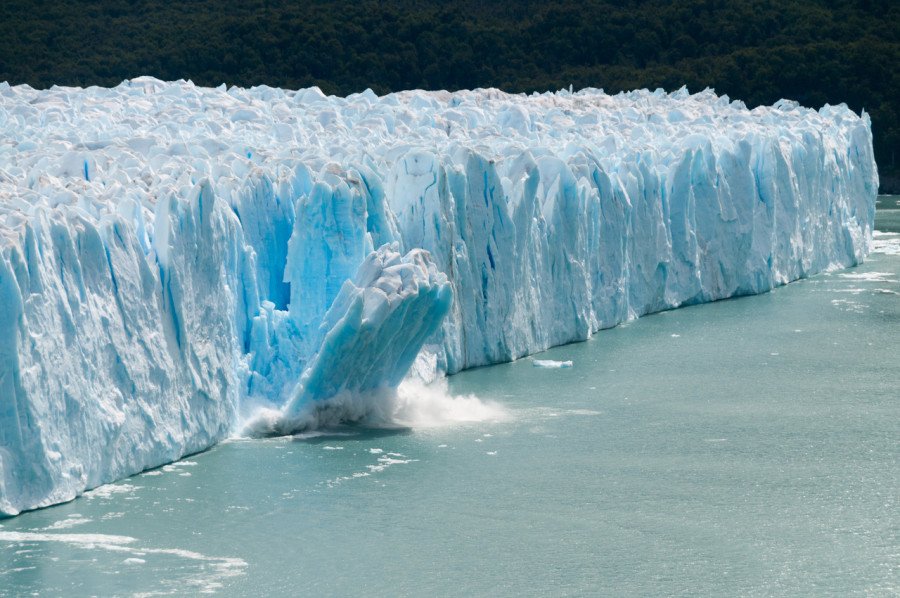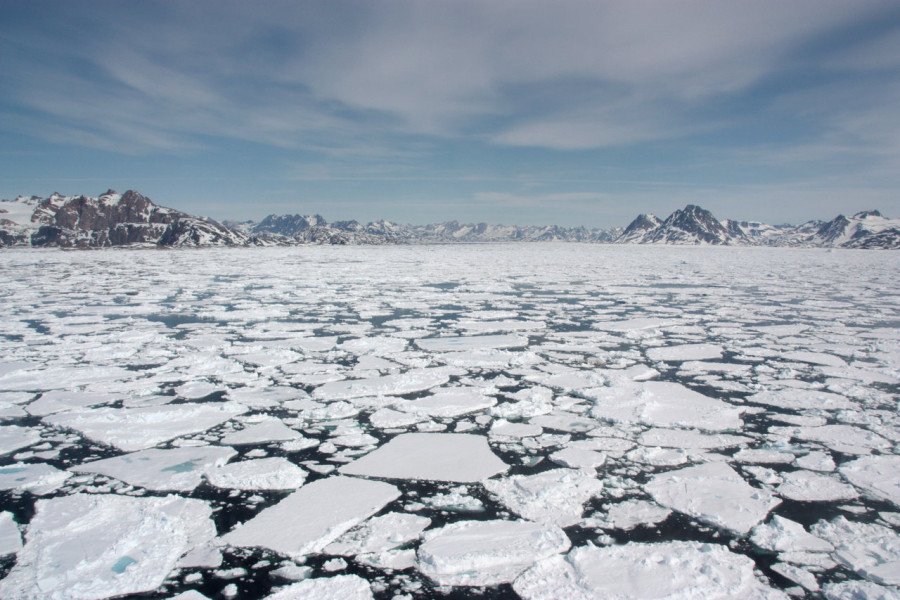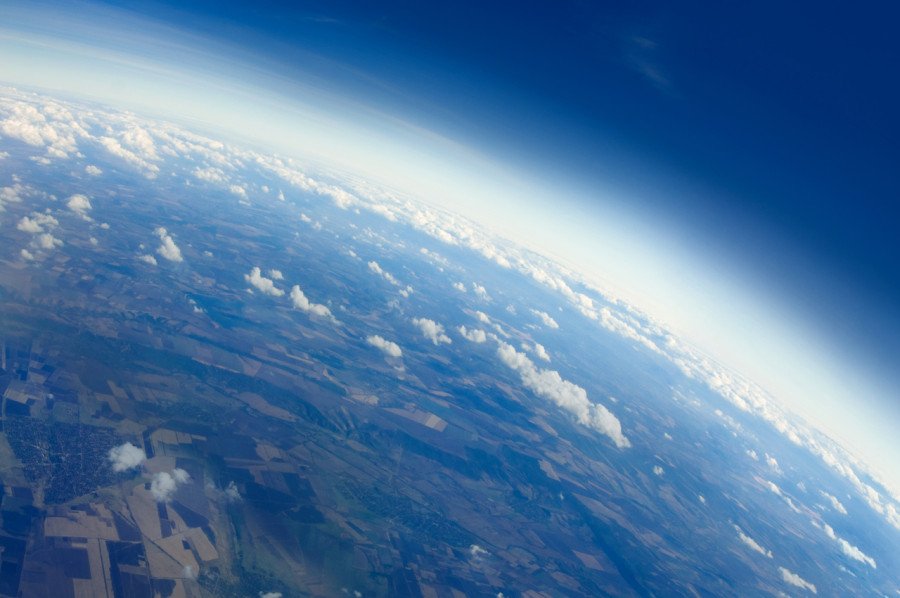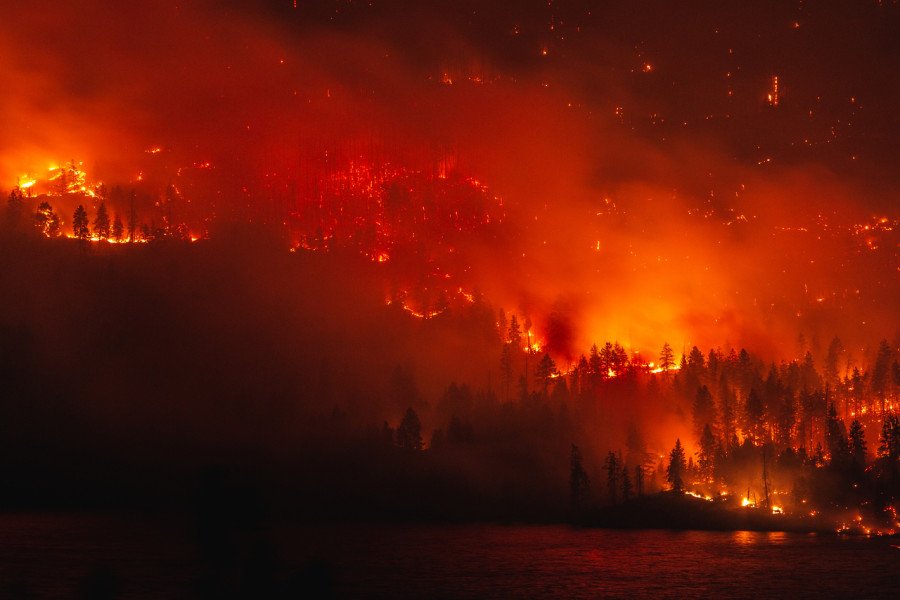Science of climate change
Get the facts about climate change through videos, experiments, and hands-on learning.
- Grade 7
- 5 activities
- 4 hours
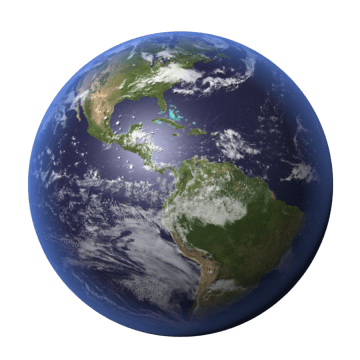
Big idea
Earth and its climate have changed over geological time.
Learning objectives
Students will be able to:
- Explain what climate change is
- Describe some of the impacts of climate change
- Provide examples of evidence of Earth’s changing climate
- Make predictions and observations in experiments
- Design an experiment about greenhouse gases and climate change
- Reflect on their experiments to identify sources of error
- Look for patterns in data about changing temperatures and greenhouse gases over time
- Work cooperatively in small groups, using clear communication and active listening
- Reflect on their competency development during activities
Activities
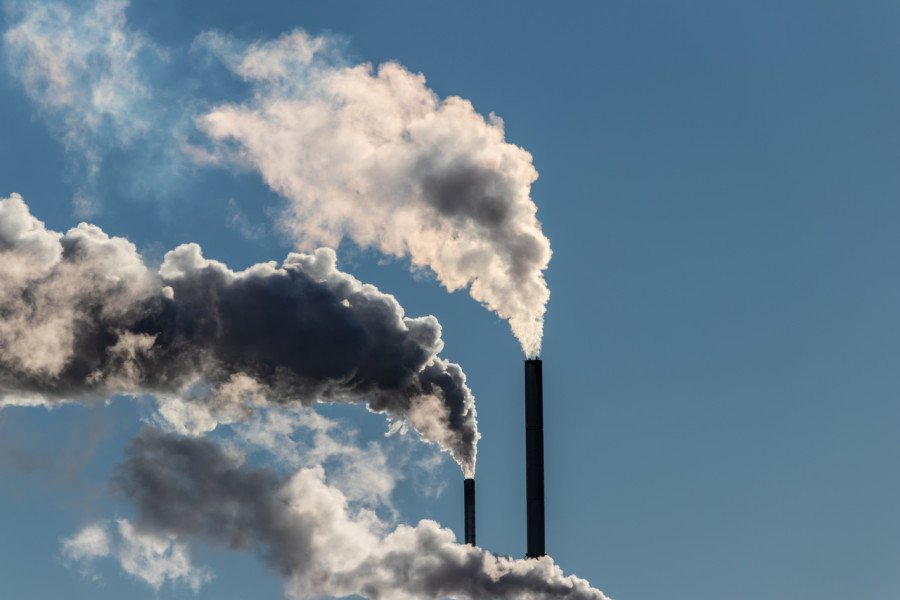
Greenhouse gases over time
What can bubbles in ice cores tell us about climate and how it’s changing?
BC curriculum fit
Grade 7 Science
Content
- Evidence of climate change over geological time and the recent impact of humans
Curricular competencies
Questioning and predicting
- Demonstrate a sustained intellectual curiosity about a scientific topic or problem of personal interest
- Make observations aimed at identifying their own questions about the natural world
- Identify a question to answer or problem to solve through inquiry
- Make predictions about the findings of their inquiry
Planning and conducting
- Collaboratively plan an experiment to answer their questions or solve problems they have identified
- Measure and control variables (dependent and independent) through fair tests
- Observe, measure and record data (qualitative and quantitative)
Processing and analyzing data and information
- Seek patterns and connections in data from their own investigations and secondary sources
- Use scientific understandings to identify relationships and draw conclusions
Evaluating
- Reflect on their investigation methods
- Identify possible sources of error and suggest improvements to their investigation methods
- Consider social, ethical and environmental implications of the findings from their own and others’ investigations
Applying and innovating
- Co-operatively design projects
- Transfer and apply learning to new situations
Communicating
- Express and reflect on a variety of experiences and perspectives of place
- Communicate ideas, findings and solutions to problems
Assessments
The activities in this unit provide an opportunity to assess individual students and small groups on their ability to:
- Identify and generate questions about climate change.
- Demonstrate knowledge and understanding about the evidence and impacts of climate change.
- Design an experiment, make predictions and observations and then reflect on sources of error.
- Work cooperatively in small groups and as a whole class, using active listening and clear communication.
- Represent and share their learning in a variety of ways.
- Reflect on their competency development.
Background info
What is climate change?
Weather refers to what’s happening outside right now: it’s sunny, rainy, windy, etc. Climate looks at weather patterns over longer periods of time at particular times of the year.
Climate change refers to a change in longer term weather patterns including temperature, precipitation and wind. Over the last 300 years, the world has been warming and is predicted to keep warming into the future. Earth’s climate has always fluctuated over geological time; the difference is that the rate of change seems to be faster than seen before.
Temperatures are rising, glaciers are melting and more extreme weather patterns are happening more frequently. Forest fires in B.C., droughts in Alberta, droughts and forest fires in Australia and extreme winter storms in the Atlantic provinces are just some of the recent climate events that are affecting ecosystems, animal migration and crop growing cycles.
Greenhouse gases and the greenhouse effect
The greenhouse effect is a natural phenomenon, keeping the Earth warm enough for life to exist. Greenhouse gases in the atmosphere, including carbon dioxide, methane, nitrous oxide and water vapour, trap heat from the Sun close to the Earth’s surface. These gases act like the glass in a greenhouse. Without the greenhouse effect, it would be too cold for anything to live on our planet.
The problem is that more greenhouse gases are going into the atmosphere and there are fewer trees to absorb them. This means our atmosphere is trapping more heat and the average temperature of the planet is increasing. This is called global warming.
Evidence of climate change
Scientists gather evidence about Earth’s changing climate from some unusual and surprising sources like ice cores, stalagmites from caves, fossil records, tree rings and shells of organisms buried deep in the oceans. Rising temperatures, air bubbles in the ice and rising sea levels are just a few examples of the evidence for climate change.
- Rising temperatures. According to the World Meteorological Organization, the Earth’s temperature has risen almost 1 C since 1880; temperatures in many places in Arctic regions have risen by almost 2 C.
- Study of air bubbles in ice cores. Ice cores provide scientists with evidence about environmental conditions from the past. Ice cores are like tree rings, since a new snow layer is created each year. The layers provide information about how much snow fell each year and contain materials such as debris from forest fires or volcanoes, dust carried by the wind, bubbles of gases from the atmosphere at the time and other things like insects or pollen. This information helps us understand how greenhouse gases have fluctuated from the past to the present. Scientists use various techniques to study ice cores and learn about Earth’s past climate.
- Rising sea levels. As the Earth warms, glaciers and ice sheets are melting at a faster rate than before. The meltwater from glaciers flows into oceans, raising sea levels. Oceans are also absorbing more heat due to the albedo effect. Albedo is the scientific word to describe a simple concept. White or light surfaces, such as ice and snow, reflect most of the Sun’s energy; whereas dark surfaces, such as land, forests and oceans, absorb most of the Sun’s energy. When water gets warmer, it expands, also causing sea levels to rise. This will affect many people who live in communities along the coast.
Impacts of climate change
Climate change is having an impact on ecosystems, economies and communities. The impacts of climate change include:
- Increasing average temperature
- More extreme weather events such as hurricanes, tornadoes, floods, droughts and forest fires
- Rising sea levels from warming oceans and melting glaciers and sea ice
- Changing weather patterns causing warmer, drier weather in some places and wetter, cooler weather in others
- Changes to animal migration and habitat
This activity focuses on the impacts to oceans, the Arctic and extreme weather events. The ripple effect of warming temperatures and changing weather patterns impacts health and social well-being, economies, infrastructure and the environment.
Why is climate change happening?
There are many human activities, behaviours and factors contributing to climate change. Some of them include:
- Burning fossil fuels. Coal, oil and natural gas are burned for things like electricity, heating and cooling, industrial production and transportation. Burning fossil fuels releases greenhouse gases into the atmosphere, trapping more of the heat from the Sun. The use of fossil fuels, coal in particular, for steam power began with the Industrial Revolution (1760 to 1840). Manufacturing shifted to factories and steam power was used in the textile, electric and automobile industries.
- Increasing population. In 1750, the world's population was estimated at 700 million people. In 2017, the world’s population was 7.5 billion people. More people use more energy and produce more carbon and other greenhouse gases.
- Increasing consumption. More people on the planet are buying, using and throwing away more things. Fossil fuels are used and burned in the manufacturing and transportation of goods.
- Fewer trees and forests. Forests (which store carbon) are cleared for wood products or to create land for farming.
Everything we do is connected. This means that what we do to our climate affects all living things, including humans.
This unit focuses on background information about the evidence, causes and impacts of climate change. The “Energy technologies” unit and “Climate action” unit explore solutions, or things people can do, to reduce the impacts of climate change.


